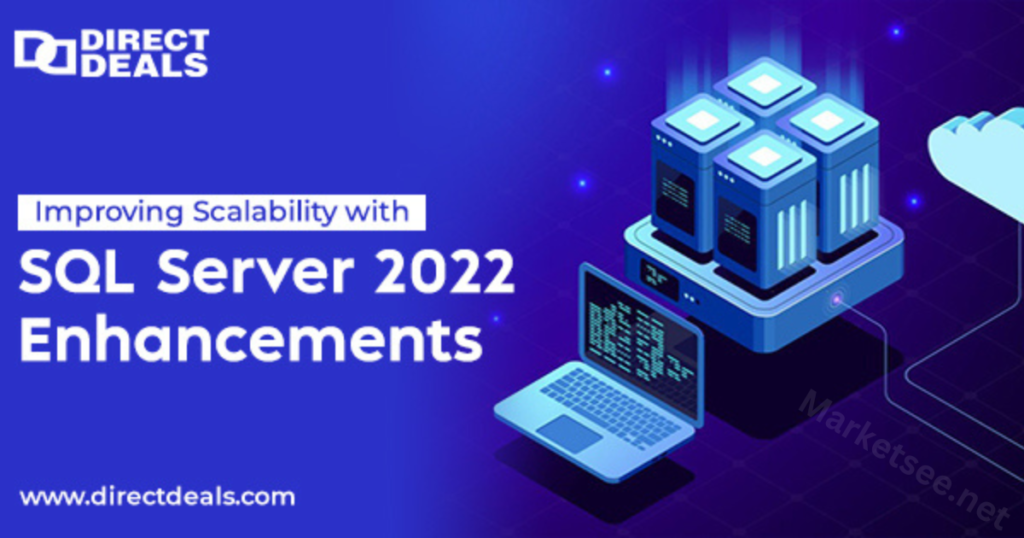
In the ever-evolving world of database management systems, SQL Server has consistently been at the forefront, providing robust solutions for businesses to manage their data effectively. With each new version, Microsoft introduces enhancements and optimizations to address the growing demands of modern applications.
Download MS SQL Server 2022, One of the standout features that promises to significantly improve scalability is the system page latch concurrency enhancements. In this blog, we will delve into what system page latch concurrency is, why it’s important, and how SQL Server 2022’s enhancements are a game-changer.
Understanding System Page Latch Concurrency
Before we dive into the improvements, let’s first understand what system page latch concurrency is and why it’s critical for database performance. In SQL Server, data is stored in pages, which are the basic unit of data storage. These pages need to be accessed and modified frequently during database operations, such as inserts, updates, and deletes.
A latch is a lightweight synchronisation mechanism used to protect data pages while they are being accessed or modified. Latches are essential to ensure data consistency and integrity in a multi-user environment. SQL Server uses several types of latches, including system page latches, to manage access to data pages efficiently.
System page latches are a specific type of latch that protects system pages in the database, including the allocation pages that keep track of free space. These latches play a crucial role in ensuring that multiple concurrent transactions can access and modify system pages without conflicting with each other. However, in previous SQL Server versions, system page latches could become a bottleneck, limiting scalability in high-concurrency scenarios.
Scalability Challenges with System Page Latch Concurrency
In earlier versions of SQL Server, system page latch contention could arise when multiple transactions were contending for access to the same system page. This contention could lead to performance bottlenecks, as transactions would have to wait for the latch to be released before proceeding. As the number of concurrent transactions increased, the contention for system page latches became more pronounced, hindering the database’s ability to scale efficiently.
SQL Server 2022’s Concurrency Enhancements
Recognizing the scalability challenges posed by system page latch contention, Microsoft has introduced significant enhancements in SQL Server 2022 to address this issue. These enhancements are designed to improve concurrency and reduce contention, allowing SQL Server to scale more effectively in high-concurrency scenarios.
Page Latch Contention Reduction:
SQL Server 2022 includes optimizations that reduce page latch contention. This means that transactions are less likely to contend for the same system page latches, resulting in improved performance and reduced latency.
Fine-Grained Latching:
The new fine-grained latching mechanism in SQL Server 2022 allows for more precise control over latching at the page level. This fine-grained approach minimizes the chances of multiple transactions waiting for the same latch and improves overall concurrency.
Adaptive Latching:
SQL Server 2022 introduces adaptive latching, which dynamically adjusts latch behavior based on workload patterns. This adaptability ensures that latch contention is minimized, even as workloads change over time.
Enhanced Monitoring and Diagnostics:
The latest version of SQL Server and SQL Server 2022 Edition provides improved tools for monitoring latch contention and diagnosing performance issues related to system page latches. This enhanced visibility helps database administrators proactively address contention problems.
Benefits of SQL Server 2022’s Enhancements
The enhancements to system page latch concurrency in SQL Server 2022 offer several key benefits for businesses and database administrators:
Improved Scalability:
The reduced contention and improved concurrency management mean that SQL Server can handle a higher number of concurrent transactions, making it more scalable for modern, data-intensive applications.
Enhanced Performance:
With fewer transactions waiting for latches, SQL Server 2022 can deliver improved performance and lower latency, ensuring a smoother user experience.
Better Resource Utilization:
The fine-grained latching and adaptive mechanisms help optimize resource utilization, allowing for more efficient use of server resources and reduced contention-related resource wastage.
Simplified Management:
The enhanced monitoring and diagnostic tools make it easier for database administrators to identify and resolve latch contention issues, simplifying database management and troubleshooting.
Editions of SQL Server 2022
Enterprise Edition: This is the most comprehensive and feature-rich edition of SQL Server. It is designed for large-scale, mission-critical applications and offers advanced features like high availability, security, and scalability. Enterprise Edition is suitable for organizations with demanding workloads and stringent performance and availability requirements.
Standard Edition: Standard Edition is a more cost-effective option for organizations that do not require all the advanced features of the Enterprise Edition. It offers core database management capabilities and is suitable for most mid-sized businesses and applications.
Web Edition: Web Edition is designed for web hosting providers who need to support large numbers of smaller databases. It has limitations compared to Standard and Enterprise editions but is cost-effective for hosting web applications and databases.
Developer Edition: Developer Edition is essentially the Enterprise Edition with a special licensing arrangement. It is intended for developers and testers to build and test applications using SQL Server. It includes all the features of the Enterprise Edition but cannot be used in production environments.
LocalDB: LocalDB is a minimal, on-demand installation of SQL Server that is designed for developers and lightweight applications. It’s easy to install and manage and is often used for development and debugging purposes.
Azure SQL Database: While not technically an edition of SQL Server, Azure SQL Database is a cloud-based database service offered by Microsoft. It provides fully managed database capabilities in the cloud and comes in several service tiers with different performance and scalability options.
Conclusion
In SQL Server 2022, the system page latch concurrency enhancements represent a significant step forward in improving the database’s scalability and performance in high-concurrency environments.
These optimizations, including page latch contention reduction, fine-grained latching, adaptive latching, and enhanced monitoring, empower businesses to handle growing workloads with ease.
As organisations continue to rely on data-driven applications, the ability to scale and perform efficiently is paramount. SQL Server 2022’s system page latch concurrency enhancements demonstrate Microsoft’s commitment to addressing the evolving needs of modern database management, making it a compelling choice for businesses seeking to harness the full potential of their data. Upgrading to SQL Server 2022 may just be the key to unlocking new levels of scalability and performance for your database systems.
Thank you for joining us on this educational adventure! We hope this blog has been useful in providing you with information regarding the Microsoft SQL Server 2022 License. If you have any more questions or would like to make a purchase, please call us at (800) 983-2471 or send us an email at support@directdeals.com.






Leave a Reply